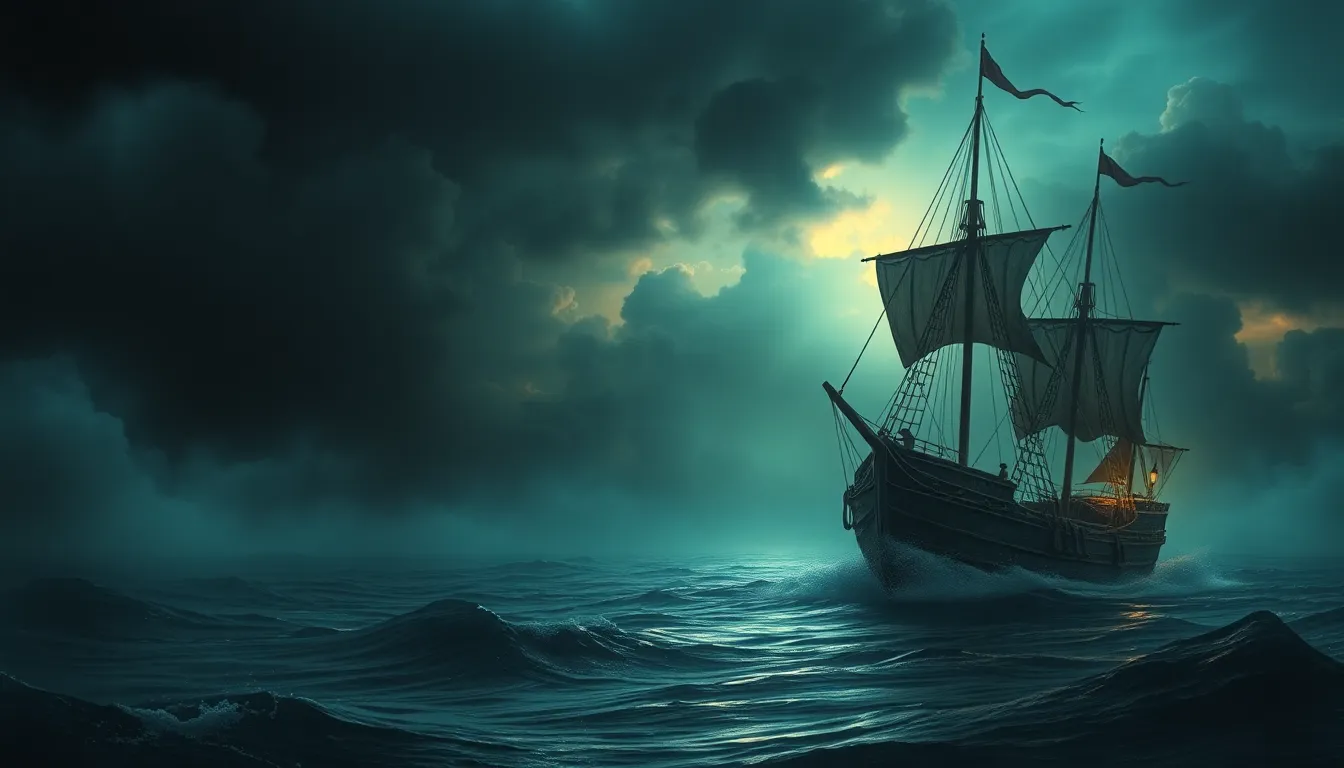The Legend of the Cursed Ship: A Tale of Maritime Misfortune
Introduction to Maritime Legends
Maritime folklore has long captivated the imagination of sailors and landlubbers alike. These tales, often steeped in mystery and adventure, serve as a reflection of the dangers and wonders of life at sea. Among these legends, the concept of cursed ships stands out, embodying the fears and superstitions that accompany seafaring life. From phantom vessels to ill-fated voyages, the stories of cursed ships resonate deeply within maritime history, offering cautionary tales of hubris and misfortune.
Origins of the Cursed Ship Legend
The legend of the cursed ship can be traced back to its ill-fated maiden voyage, marked by a series of unfortunate events. The ship, known as the Fate’s Reckoning, was launched in the early 18th century, a time when the seas were teeming with opportunity and peril. The captain, a proud and ambitious man named Captain Elias Hawthorne, was determined to make his mark on maritime history.
Accompanied by a crew of seasoned sailors and hopeful passengers, the Fate’s Reckoning set sail under clear skies. However, the initial moments of the voyage were overshadowed by an ominous incident: a fierce storm erupted without warning, tossing the ship violently and instilling a sense of dread among the crew and passengers. This incident marked the beginning of a series of events that would lead to the emergence of the ship’s curse.
The Curse Unfolds: A Series of Misfortunes
As the voyage progressed, the crew encountered a string of calamities that seemed to confirm the ship’s cursed reputation. Some of the most notable misfortunes included:
- A sudden outbreak of illness among the crew, leading to several deaths.
- A collision with a hidden reef that damaged the ship’s hull.
- Strange sightings of ghostly apparitions during the night watches.
- A mutiny sparked by the crew’s growing fear of the curse.
Eyewitness accounts documented in ship logs and local newspapers described the harrowing experiences of those aboard. One crew member, Thomas Granger, recounted how a night of eerie silence was broken by the haunting sound of a woman’s wail, believed to be the spirit of a previous sailor lost at sea.
The Role of Superstition in Maritime Culture
Superstitions have played a significant role in maritime culture, often dictating the actions and beliefs of sailors. Among the common superstitions were:
- Whistling on deck was believed to summon storms.
- It was considered bad luck to change the name of a ship.
- Women aboard a ship were thought to bring misfortune.
The Fate’s Reckoning became a focal point for these superstitions. As misfortunes continued to plague the ship, sailors attributed the curse to their disregard for maritime traditions. Comparisons were drawn to other infamous vessels like the Mary Celeste and the Ourang Medan, both of which were shrouded in mystery and horror.
The Ship’s Mysterious Disappearance
The final voyage of the Fate’s Reckoning marked the pinnacle of its cursed legacy. In 1723, the ship set out from port with a sense of foreboding hanging in the air. As it sailed into uncharted waters, the crew and passengers were never seen again. This mysterious disappearance sparked numerous theories, including:
- A catastrophic storm that swallowed the ship whole.
- A mutiny that led to the ship being abandoned.
- Supernatural forces claiming the cursed vessel.
Search efforts were launched, but no trace of the ship was ever found. The loss of the Fate’s Reckoning had a profound impact on local communities and maritime industries, leading to heightened fears of the curse.
Legends and Folklore: Retellings of the Cursed Ship
Over the years, the legend of the Fate’s Reckoning has evolved, taking on various forms in literature and art. Writers and artists have drawn inspiration from the tale, transforming it into a cautionary story that warns of the consequences of arrogance and disregard for the sea’s power.
Literary adaptations have included novels, plays, and poems that capture the essence of maritime misfortune, while films and documentaries have explored its haunting narrative. The ship’s influence extends to popular culture, with references in video games and television series that highlight the enduring allure of cursed vessels.
Investigating the Curse: Fact vs. Fiction
In recent years, historians and archaeologists have sought to separate fact from fiction regarding the Fate’s Reckoning. Investigations into historical records have revealed:
- Records of the ship’s construction and its ill-fated voyages.
- Archaeological findings that shed light on maritime practices of the time.
- Interviews with maritime historians who provide insights into the cultural context of the curse.
While some myths surrounding the ship have been debunked, the allure of its legend remains intact, captivating the imaginations of those who seek to understand the mysteries of the sea.
Modern-Day Implications of the Legend
The legend of the Fate’s Reckoning continues to shape maritime practices today. Sailors and shipping companies often reference the tale as a reminder of the importance of respecting the sea. The legacy of cursed ships serves as a lesson in humility and the need for adherence to maritime traditions.
Additionally, the legend has had a significant impact on tourism and cultural heritage in port cities. Many places have embraced the story, offering tours and exhibits that delve into the mystique of maritime folklore.
Exploring Other Cursed Ships in History
The Fate’s Reckoning is not alone in its cursed legacy. Other notable cursed vessels include:
- The Mary Celeste – Found abandoned in 1872 with no explanation.
- The Ourang Medan – Reported to have been haunted before its mysterious sinking.
- The HMS Dauntless – A ship that met with numerous disasters during its service.
These cursed ships share common themes of misfortune and superstition, offering a comparative analysis of maritime lore across different cultures and eras.
Conclusion: The Enduring Allure of Maritime Curses
The legend of the cursed ship, particularly that of the Fate’s Reckoning, has left a lasting impact on society. These stories serve not only as entertainment but also as vital components of maritime history, preserving the richness of seafaring culture. The interplay between myth and reality in these tales continues to fascinate and educate, ensuring that the lessons of the past are never forgotten. As long as there are seas to navigate, the allure of maritime curses will endure, reminding us of the power and mystery of the ocean.



